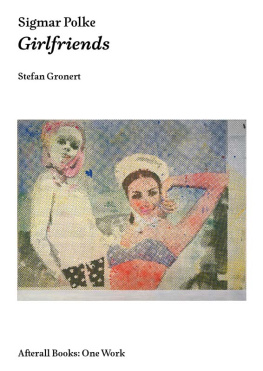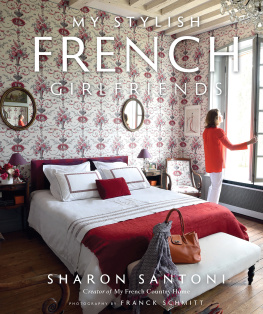One Work is a unique series of books published by Afterall, a Research Centre of University of the Arts London, located at Central Saint Martins. Each book presents a single work of art considered in detail by a single author. The focus of the series is on contemporary art and its aim is to provoke debate about significant moments in arts recent development.
Over the course of more than one hundred books, important works will be presented in a meticulous and generous manner by writers who believe passionately in the originality and significance of the works about which they have chosen to write. Each book contains a comprehensive and detailed formal description of the work, followed by a critical mapping of the aesthetic and cultural context in which it was made and that it has gone on to shape. The changing presentation and reception of the work throughout its existence is also discussed, and each writer stakes a claim on the influence their work has on the making and understanding of other works of art.
The books insist that a single contemporary work of art (in all of its different manifestations), through a unique and radical aesthetic articulation or invention, can affect our understanding of art in general. More than that, these books suggest that a single work of art can literally transform, however modestly, the way we look at and understand the world. In this sense the One Work series, while by no means exhaustive, will eventually become a veritable library of works of art that have made a difference.
I would like to express my gratitude to Terry Myers for prompting me to write this book, as well as to Hubertus Butin, Anthony DiPaola and above all Christina Vegh for discussing its content.
The author and the editors would also like to thank Rodolphe von Hofmannsthal of David Zwirner and The Estate of Sigmar Polke for their kind help in securing images for this publication.

Stefan Gronert is Curator of Photography and New Media at the Sprengel Museum Hannover. A lecturer in art history at the Braunschweig University of Art, he is the author of Jeff Wall: Specific Pictures (Schirmer/Mosel, 2016) and co-editor of Gerhard Richter: Editions 19652013 (Hatje-Cantz Verlag, 2014).
:
Bas Jan Ader: In Search of the Miraculous
by Jan Verwoert
Hollis Frampton: (nostalgia)
by Rachel Moore
Ilya Kabakov: The Man Who Flew into Space from his Apartment
by Boris Groys
Richard Prince: Untitled (couple)
by Michael Newman
Joan Jonas: I Want to Live in the Country (And Other Romances)
by Susan Morgan
Mary Heilmann: Save the Last Dance for Me
by Terry R. Myers
Marc Camille Chaimowicz: Celebration? Realife
by Tom Holert
Yvonne Rainer: The Mind is a Muscle
by Catherine Wood
Fischli and Weiss: The Way Things Go
by Jeremy Millar
Andy Warhol: Blow Job
by Peter Gidal
Alighiero e Boetti: Mappa
by Luca Cerizza
Chris Marker: La Jete
by Janet Harbord
Hanne Darboven: Cultural History 18801983
by Dan Adler
Michael Snow: Wavelength
by Elizabeth Legge
Sarah Lucas: Au Naturel
by Amna Malik
Richard Long: A Line Made by Walking
by Dieter Roelstraete
Marcel Duchamp: tant donns
by Julian Jason Haladyn
General Idea: Imagevirus
by Gregg Bordowitz
Dara Birnbaum: Technology/Transformation: Wonder Woman
by T.J. Demos
Gordon Matta-Clark: Conical Intersect
by Bruce Jenkins
Jeff Wall: Picture for Women
by David Campany
Jeff Koons: One Ball Total Equilibrium Tank
by Michael Archer
Richard Hamilton: Swingeing London 67 (f)
by Andrew Wilson
Martha Rosler: The Bowery in two inadequate descriptive systems
by Steve Edwards
Dan Graham: Rock My Religion
by Kodwo Eshun
Yayoi Kusama: Infinity Mirror Room Phallis Field
by Jo Applin
Michael Asher: Kunsthalle Bern, 1992
by Anne Rorimer
Sanja Ivekovi: Triangle
by Ruth Noack
Hlio Oiticica and Neville DAlmeida: Block-Experiments in Cosmococa program in progress
by Sabeth Buchmann and Max Jorge Hinderer Cruz
Rodney Graham: Phonokinetoscope
by Shepherd Steiner
Philip Guston: The Studio
by Craig Burnett
Lee Lozano: Dropout Piece
by Sarah Lehrer-Graiwer
Thomas Hirschhorn: Deleuze Monument
by Anna Dezeuze
Mike Kelley: Educational Complex
by John Miller
Lee Friedlander: The Little Screens
by Saul Anton
Sturtevant: Warhol Marilyn
by Patricia Lee
Agnes Martin: Night Sea
by Suzanne Hudson
David Hammons: Bliz-aard Ball Sale
by Elena Filipovic
The physical presence of a well-known work of art, when experienced for the first time and not kept at some remove by throngs of visitors, bad lighting, protective barriers, reflective glass or other obstacles imbues the viewer, however otherwise knowledgeable about it, with amazement. The actual work of art is different to its familiar reproduction.
My visit to the retrospective Alibis: Sigmar Polke, 19632010 at the Museum of Modern Art in New York in 2014 led to a truly surprising encounter with a work with which I was already well versed through reproductions. In a long narrow gallery hung predominantly with black-and-white pictures along one wall, this large, colourful painting appeared. I was looking at Freundinnen (Girlfriends, ), created in 1965/66. In its immediate impact it struck me as starkly distinct from other pictures by Polke from this period, in the sense that it had a significantly different effect from a distance than up close. I was surprised not only on an experiential level but also in considering the work against the background of the Pop art of its era. The tendency, beginning in the mid-1950s, had been toward an extremely flat painting style and, often, a grand scale. Pop art, in its investigation of European and American consumer societies, was largely seen as a reaction to Abstract Expressionism. Pop vies for attention, with the spatial location of the individual viewer not a prime concern.
Things are quite different with the 150 190cm painting Girlfriends. From a distance of a few metres, two women are visible; upon closer inspection they dissolve into variously coloured rasters.
Into which art-historical drawer might we insert Polkes media-reflective pictorial language? The raster picture is reminiscent of Roy Lichtensteins Pop art, and, certainly, since the early 1960s Polke was familiar with American Pop art. But I wonder whether Girlfriends belongs to another historical context. Bearing in mind the recognizable divergences from smooth surface design, the slight temporal delay of a German response and the question of the viewers location, is it perhaps a matter of Post-Pop art? These could, of course, be the wrong questions. Rigid categories cant contain a differentiated vision.
So, let us come back to the picture itself and once again stand at a distance. The gaze is challenging: the women do not look at each other but in the direction of the viewer. Rather than a relaxed dialogue between female friends, as the title of the picture might suggest, a tense interaction is before us. What do the two have to do with each other at all? They are connected by the similar styles of their different-coloured clothing and the proximity of the patterned garments of ones lower and the others upper body, and they are caught in a moment of absolute self-exposition. Standing each for themselves, not for each other, their attention is turned exclusively toward the viewer. Thus, what links them is a common attitude of posing of modelling oneself toward the gaze of a viewer with the objective of visual seduction.
Next page









